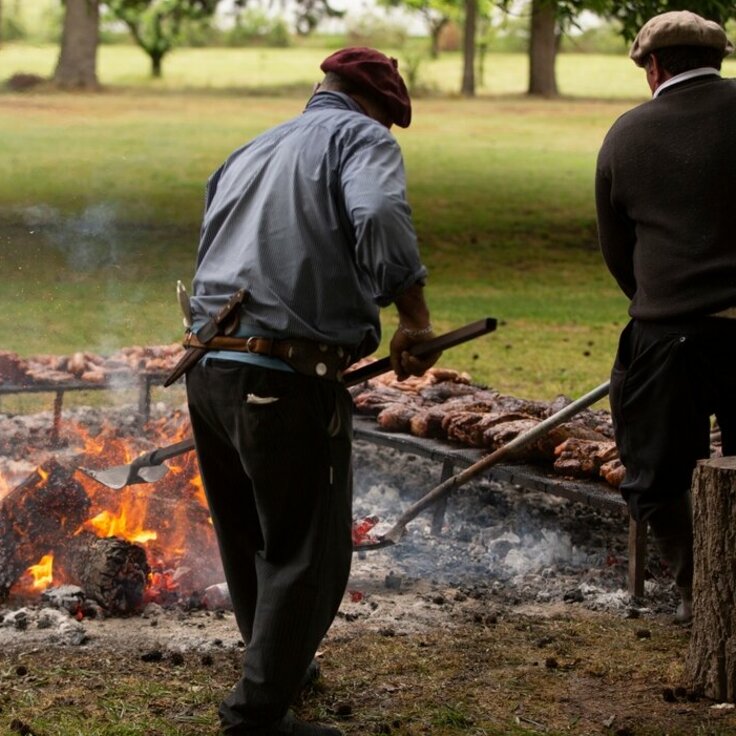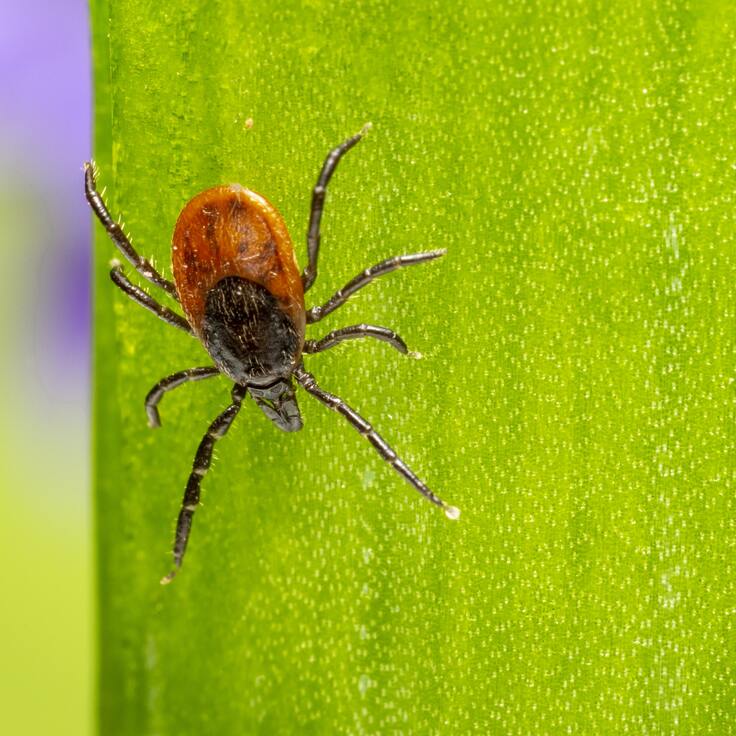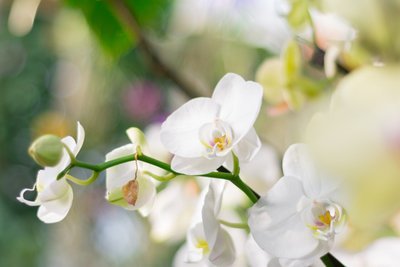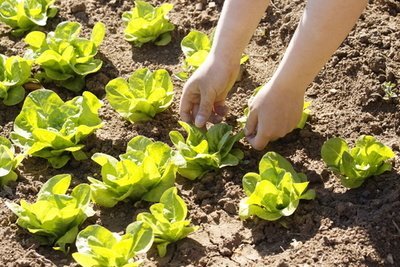A rosy summer ahead
Although roses are much easier to look after these days, AG's Kris Collins says there are still summer jobs to do.To my way of thinking, a garden wouldn’t be a garden without a rose bush or two. And, when you think about it, they needn’t be bushes, for there are climbers, ramblers, ground-hugging roses and miniatures that can stay in pots all year round. It is true that in the past roses have been considered ‘high-maintenance’ plants. They had a reputation for always getting diseases, or it seemed as though you needed to feed them every five minutes, or their pruning was so difficult that if you did the wrong thing at the wrong time you’d have no flowers for years. And then there are the thorns!
But, actually, these issues have all been addressed by rose breeders and experts - and common sense! There are many varieties now that have been bred for resistance against some of the common pests and diseases. There are some excellent fertilisers that are formulated just for roses, and all you need to do is apply these three or four times a year. And, it seems that pruning bush roses does not need to be as precise now as was once thought (indeed, trials have shown that if you go over a rose with a hedge trimmer, you end up with as much flower as if you had spent hours examining a plant and making a slanted, outward-facing pruning cut precisely six millimetres above a bud, which was the way older gardeners were taught).
As for the thorns, well, it’s common sense to wear gloves when handling roses, and you should take all steps to avoid accidentally rubbing yourself against them. But then there are some rose varieties recommended for their lack of thorns, so even that has been addressed! We grow roses for their summer flowers, so the temptation now is to sit back and just enjoy them. But they will perform even better for you if you keep up a regime of summer maintenance.
Remove suckers
Suckers come from below the graft union, which is visible as a swelling near the base of the rose stem; they do not appear on roses grown on their own roots, such as species roses. These frequently have greater vigour than the main plants and, if left, will take over. They will not, however, have the same traits as the main plant, and they rarely flower. Suckers must be removed whenever they are seen, but they will become most evident during summer.
Remove a sucker with a knife or a pair of secateurs, severing it at the point where it joins the rootstock - it may be necessary to scrape some soil away to see where this is. Some experts say to pull the suckers off, gripping hard and yanking them so they come away at the base. This can take a bit of strength and dexterity and, I have to say, it’s a lot easier to use secateurs!
How to keep garden roses in tip-top condition
Feeding: All roses benefit from at least three applications of fertilizer per year. A balanced, general feed at the rate of 2 oz per sq yd (65g per sq m) will encourage further blooms. Feed now, but do not apply any more after July as it will promote growth of young stems that will not ripen before the onset of colder weather.
Dead-heading: The first flush of flowers will be over by now, and the sooner the dead blooms are removed the better. Cut down the flower stem by about one third. Do not dead-head roses grown for their autumn hips.
Tie-in climbers: As new stems on these plants develop, they should be tied in to their supports, to avoid wind damage. If this is done regularly, they should be in position to replace the older wood, which will be pruned out during winter. Left untied they may well break, or at least be inflexible enough to make tying in later on more difficult.
Watering: Roses can be reasonably drought tolerant…but there are always times when it is advisable to apply water in summer. If we get a particularly long warm and dry summer spell, then watering roses is important. Make sure you water any newly-planted roses (that have been planted since last autumn). And also pay attention to climber and rambler roses that may be growing in the ‘rain shadow’ of a wall.
Balling: Rose ‘balling’ is caused by fungal infection, and is most severe in a cool, wet season. It affects the flowers, just as they are about to open from buds. It manifests itself as an invisible fungal covering, sticking the surface of the petals together. Sometimes you can manually ‘massage’ the bud, which can un-stick the petals, and the resulting flower may be only slightly damaged, with the outer petals coming off worst. It is a problem mostly with roses that are many petalled, and thinner petalled.
Pest and disease controls
Aphids: Greenfly and blackly that feed by sucking the sap of young, tender plant growths. They are often seen clustering on young, unopened rose buds, and on the undersides of young leaves. Their feeding will not kill an established rose bush, but it will distort the buds and leaves. Small infestations should be cut away and binned. Spray larger infestations with a suitable insect killer, such as Growing Success Shrub & Flower Bug Killer, or Bayer Multirose Bug Killer.
Thrips: These are small, narrow-bodied sap-sucking insects. They feed on rose flowers, both as the grubs (larvae) and as winged adults. The larvae dig deep into the buds and eat the petal tissues inside. This makes controlling them difficult. Insecticides are available however, and some control is provided when treating for other insects, such as aphids.
Leaf-rolling sawfly: This has become quite a common pest in some parts. Individual leaves become tightly rolled, and badly infected leaves shrivel and die. Inside the roll you will find the green-grey maggot of the sawfly. Picking off the rolled leaves by hand, and squeezing the leaves tightly to dispatch the grub inside, is the best form of control.
Caterpillars: There are a number of different caterpillar species that will readily devour rose foliage. One of the worst in the caterpillar of the winter moth, seen as bright green caterpillars some 1/2in (1cm) long. If they are not too numerous, pick them off by hand. Otherwise, spray with a suitable insecticide.
Leaf-cutter bees: These cut regular-shaped holes at the sides of rose leaves. They then carry the pieces back to their nests. It does not harm the plant, other than disfiguring a small number of leaves. It is not worth controlling it chemically; but you could destroy the nests if you come across them, which will merely send the bee off elsewhere.
Black spot: This fungal disease shows up, quite literally, as black spots on the rose leaves. The leaves will then turn yellow, prematurely, and drop off. A severe infestation will cause a plant to defoliate completely, possibly several months before the normal time for the leaves to die and drop. Healthy plants are always less vulnerable to blackspot, so keep plants well nourished and watered. Spray with Scotts Rose Clear or Bayer Multirose Concentrate.
Mildew: There are two different types of mildew. The first, and more pertinent, form where roses are concerned is powdery mildew, identified by the way it covers young leaves, buds and stems by its white ‘mycelium’. Older parts of the plant are generally resistant to mildew. Without treatment, the disease will cause the affected parts to become stunted and distorted. Spray with any fungicide formulated for use on ornamental plants.
Rust: This fungal disease is very aptly named, for the tell-tale signs are bright orange, rust-like pustules that start to appear on the leaves - both sides - and which then spread to other parts of the plant. It spreads most rapidly in damp, cool weather. The disease is hard to eradicate because it overwinters as spores on the soil, as well as on fallen leaves - and not just rose leaves. Wind-blown spores also bring in new infection. Spray with Scotts Rose Clear or Bayer Multirose Concentrate.








